Growing Revenue at a Pumpkin Patch (Year 3)
Unconventional strategies that helped us achieve record-breaking revenue and profitability for a 3rd year in a row
Hi there, it’s Adam. 🤗 Welcome to my weekly newsletter. I started this newsletter to provide a no-bullshit, guided approach to solving some of the hardest problems for people and companies. That includes Growth, Product, company building and parenting while working. Subscribe and never miss an issue. If you’re a parent or parenting-curious I’ve got a Webby Award Honoree podcast on fatherhood and startups - check out Startup Dad.
Questions? Ask them here.
🎃 Happy Halloween everyone 🎃
For the last two years I’ve written about how a group of volunteer Dads applied operational rigor and growth strategies to a local pumpkin patch to transform our earnings. Last year I ended with this:
When we started this year’s patch I was convinced that all of the optimizations we had done in years past would make it hard to grow again like we had the past two years.
Going into this year I was equally convinced that we’d reached our maxima. How could we possibly top the numbers from last year? There’s only so much (pumpkin) juice to squeeze out of a small-market, school-fundraiser. Combine that with Halloween landing on a Friday which meant we’d be closing days ahead of time (our historical plan has always been to do teardown on a weekend for volunteer availability). Topping last year’s $54k seemed incredibly daunting if not impossible.
Once again, I was wrong. We did it again.
You can read about 2023 here and 2024 here.
This year the real story isn’t about new tactics—it’s about what happens behind the scenes.
But first, what is the Wildwood Dads Club?
The Wildwood Dads Club non-profit organization is a storied institution that dates back 101 years to the founding of Wildwood Elementary School.
Our mission is to drive fundraising and community building for Wildwood alongside the Wildwood Parents Club. In our district, ~37% of school funding comes from local funding sources: parcel taxes, our education foundation nonprofit, and parent / community support. Throughout the year the Dad’s Club raises ~$15-30k+ for the school which is then spent on capital improvements, infrastructure projects, and classroom support. Things like sports equipment for PE, classroom technology, new computer lab equipment, AV system upgrades, and more.
One of our largest fundraisers is the Pumpkin Patch.
For more than 13 years our seasonal, non-profit pumpkin patch was stuck at around $30,000 in revenue and $15-20k in net income. Then starting in 2022 revenue has looked like this:
2022: $38,000
2023: $42,000
2024: $54,000
And this year, in 2025, our patch revenue was $69,100 a 27% YoY increase!
Let’s start with some big achievements:
Total revenue: $69,100
AOV: $45.17 (We reversed the 2024 decline in AOV and once again did not change prices for a 3rd year in a row)
Total Purchases: 1,530
Pumpkins Sold: ~6,891
Highest single-day sales ever: $8,002 (Sunday before Halloween) despite heavy rain
What We Kept Doing (And Why It Still Works)
Before we jump into this year’s lessons, it’s important to recognize that the last several years involved measuring, refining and optimizing our tactics. We’re building off of a very solid foundation.
Signage and Local Visibility
We maintained the refreshed signage from 2024 that emphasized a “Support Our Schools” message along with the side-of-the-road Giant Jack signage.
This year we were able to secure a win by getting special permission from the city to place signs back on public right-of-ways. We also put the signs out ahead of opening weekend to start to generate interest. Both were successful! It turns out the city decided they had better things to do than take down the signage of a volunteer fundraiser hanging on some trees. Victory!
Why does this work?
Local signage remains a top-3 traffic driver to the patch. In our in-person checkout “HDYHAU” (i.e. asking customers how they found out about the patch) a large percentage of people cited that they were driving by and saw a sign.
Many also added that they wanted to see their money stay locally in the community which underscores the importance of the “Support Our Schools” messaging.
Giant Jack remains the main attraction and top photo-taking opportunity. Our staged “photo shoot” location is a hit with the crowds. We even saw people setup their own mini shoot and bring some props:
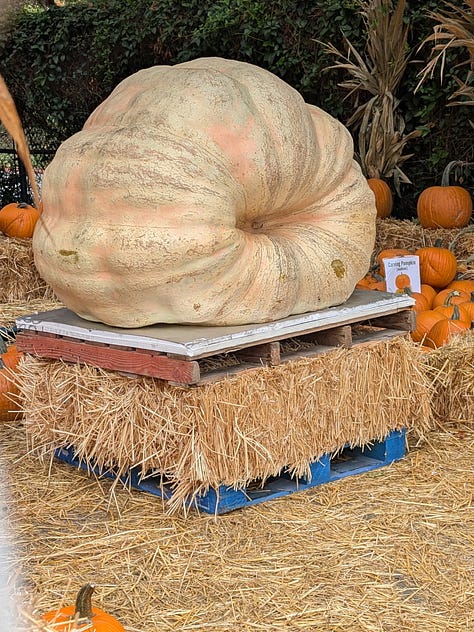
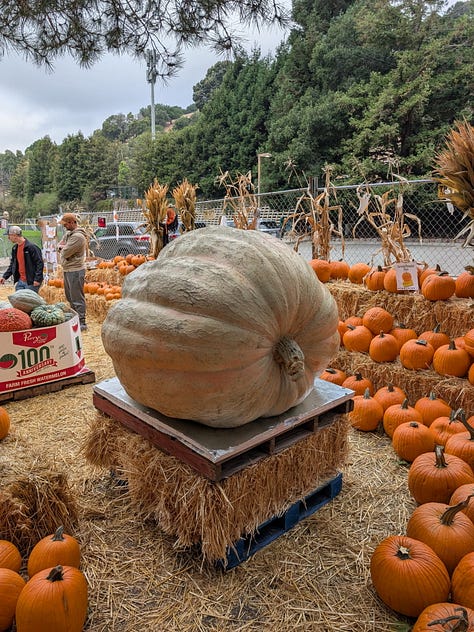
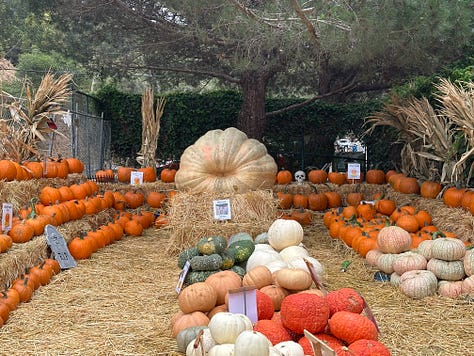
Continued SEO and AEO Dominance
We maintained our Google Business Listing with updated hours, photos, etc. and continued our review generation strategy. We now have 34, 5-star reviews on Google (+11 YoY) and 11 on Yelp (+1 YoY).
Even better, when you search for “top pumpkin patches near me” we are in the #1 position in Google and Yelp.
Our AEO listings within ChatGPT and Perplexity got a bit more crowded this year though we were still listed in the top 3. I asked Perplexity why we weren’t in the top spot and this is what it told me:
Apparently offering fewer experiences takes us down a couple notches. Perhaps we’ll see if we can get a goat for next year.
Why does this work?
We all know how powerful Google is in capturing high-intent searches and it remains a top traffic driver (along with WoM and signage). This year we added a clear CTA at the patch to scan a QR code and leave us a review. This helped increase the number of reviews YoY by 36% and they’re all 5 stars!
Those reviews serve a double purpose in helping drive discovery and social proof. We had one family who drove 20 miles after hearing about our patch from friends and neighbors and then looking us up on Google.
As a comparison: last year we had ~700 “direction requests” from our Google Business page. This year it was 1100!!!
Local School Distribution and Door Busters
We continued our tradition of distributing coloring sheets to all the local elementary schools with an offer of a free pumpkin if you brought the sheet to the patch. We also distributed it to local churches for youth groups, posted it on our Google Business page and new for this year we had takeaway coloring sheets at the patch itself. If people showed up without a sheet they could take one and come back. This drove higher repeat and retention rates as we got deeper into the season.
Why does this work?
In addition to driving repeat visits it creates an important word-of-mouth opportunity within the school community. Kids talk about it, they bring them home for their parents, and it costs us basically nothing to produce them. This in turn makes the patch a “school community event” rather than just a retail stop.
We continued our display of the coloring sheets along the fencing at the patch. The rain wasn’t exactly our friend sometimes but displaying hundreds of coloring sheets drove social proof and engagement. We’d also have one of our kid volunteers go out and tape up the sheet with the (usually younger) kid who colored it. It instills a sense of pride and community for those kids.
Merchandising and the Psychology of Abundance
Once again we piled the pumpkins high instead of single stacking them. No one wants to shop at a thinly-stocked, depressing-looking patch. And they also don’t want to take the “last pumpkin.” We never gave them the chance! By merchandising pumpkins literally spilling into the walkways and leveraging multiple stacks and displays throughout we created a psychology of abundance for our guests.
In the next section I’ll elaborate on why we really committed to this approach for this year.
Why does this work?
As mentioned above, no one wants to take the last piece of cake (or the last pumpkin). Having displays piled high gives people the confidence to browse, touch the merchandise and buy. If the displays are sparse as they were in prior years we saw hesitant customers and lower spend. The overflowing displays also give people an excuse to linger just a litttttle bit longer and choose carefully.
Volunteer-Led Sales Approach
As with last year everyone who volunteered at the patch was always wearing a bright purple lanyard and volunteer badge. It was a great conversation starter and allowed us to introduce ourselves as a 100% volunteer-run organization and a 501(c)(3) nonprofit.*
We had far more kids joining their Dads this time around: emphasizing the local school support, helping carry pumpkins out to cars, working the register and wandering around the patch helping customers with carrying and photo-taking.
Why does this work?
This is a clear differentiator from commercial patches. No one is helping you pick out the perfect pumpkin at a grocery store, or offering to carry them to your car. Most of the employees at local mega-patches couldn’t be less interested in helping you (I know, I’ve seen the apathy firsthand). The human touch matters; it’s like walking into the Apple Store of pumpkin patches. Supporting schools resonates deeply with visitors and kid volunteers are especially effective. Who says no to a kid?!?!?
*Note: we’re not having any OpenAI-level debates about our non-profit status btw. That’s rock solid.
Our Secret Weapon: Inventory Management
We continued our successful 2024 process of daily inventory tracking and sales forecasting based on historical data. Knowing what pumpkin varietals were popular at different times of the month (gourds in the beginning, carvers in the end) makes a huge difference especially in the psychology of abundance mentioned above.
We also continue to have a firm grasp on our per-unit margin calculations which helps us manage our discounting strategy. The good news is that costs to us didn’t really increase all that much this year either!
Why does this work?
You can’t sell what you don’t have, period. By understanding the cadence and demand for all 6,000+ pumpkins sold throughout the month we were able to prevent both over-ordering (waste, margin hit) and under-ordering (lost-sales, revenue hit).
What We Did Differently in 2025
I ended last year’s post with this:
I am not pleased to say we did very little of this in ‘25, hah! But we did do some new tactics, leaned heavily into other successful ones, and have a lot of learning from this year.
Weather Is a Gift or a Disaster
Last year we had an incredible heat wave in the earlier part of October, with temperatures in the upper 90’s and over 100 on a few days. This completely decimated sales. No one wants to shop for Fall when it feels like summer.
You could see the opposite effect this year: cooler weather meant sales jumped right from the beginning and trended above last year the entire time. This year that same weekend was ~30-35 degrees cooler. Wow.
The Keep It Full Philosophy
The one thing holding us back in prior years from fully stocking the patch all the way until shutdown was that we were worried about spoilage and waste. So our ordering, while pegged to historical trends, was always a little more conservative to preserve our margins. Selling every single pumpkin felt like success.
It turns out that this isn’t true. Selling every single pumpkin means we had to heavily discount at the end and left money on the table. Visual emptiness costs us more than waste and an empty patch discourages purchasing; especially in the final hours.
Our new approach for this year was to “take the gloves off.” We kept the patch fully stocked through the final day. We committed to abundance despite the fear of waste (more on why that was possible in a second). Our goal shifted from “sell everything” to “never disappoint a customer.”
So what made it possible for us to play so much offense?!? A few things:
In working with our supplier we were able to shift to a just-in-time inventory model.
We moved to a daily ordering and delivery system in the final week so that we could top up every day.
We negotiated heavily with our supplier to take inventory back that we didn’t sell. This was key! We were able to proceed knowing pumpkins wouldn’t be wasted.
A 4th year of forecasting has really helped us dial in our rates of selling.
Patch Papa Emeritus Matt Derrigo put it best:
“You can’t sell product you don’t have. We should be buying even more and the goal should not be to sell everything, but have some pumpkins left on the shelf; no different than selling the newspaper.”
The results of this strategy were immediately clear:
The Sunday before Halloween produced our highest single-day sales (both gross and net) ever.
This happened despite heavy rain and overcast weather.
Because of the rain the parking opened up significantly and open parking spaces means people show up to shop.
We saw our average order value and sales numbers climb in the last few weeks of the month, especially for carving pumpkins.
The positive feedback loop works!
Focus On Your People
With our tactics working and inventory strategy well-optimized we expected growth would be automatic. We learned something new though: our biggest constraint became people.
Getting Dads to volunteer this year was surprisingly difficult and different from previous years when participation came easily. We were baffled; why was this suddenly so hard?!?
Two separate conversations happened on two different occasions that clued us in to what the issue was:
Several Dads mentioned that they hadn’t been hearing about how the patch was going. I noticed in our Dads Club mailing list we were asking for volunteers but not celebrating the successes. These dads were both curious and concerned; they felt out of the loop.
One quote from a Dad who talked to Matt:
“I assumed you weren’t involved this year or if you were, things must not be going very well because the usual sense of excitement and progress was missing.”
People want to play for the winning team. We were winning and not telling anyone.
Sharing updates is great, but they also need to be personal to connect with our volunteers.
What broke?
Historically after every volunteer shift we’d sent a personal note to the volunteers. That note thanked them specifically, shared how much money they helped raise, connected their efforts to the bigger picture and generally closed the loop on their volunteerism. This makes people feel valued, see their tangible impact, connect individual effort to the group’s success, and perhaps most importantly: encourages return volunteering. This is no different than running a company. How many times have you heard as a leader that employees feel disconnected from the strategy or what their impact is?!? It’s one of the most common pieces of feedback.
We missed this in 2025 when a new Dad took over scheduling, we hadn’t codified this lesson from prior years and it made volunteer recruitment harder.
Matt summed it up best:
“Feedback isn’t just a courtesy; it’s fuel. Timely, thoughtful feedback sustains engagement and reinforces a sense of progress and purpose. It’s essential to keep any volunteer effort thriving.”
Many Hands Make Light Work, But Is There A Limit?
As a way to include more people in the planning of the patch (hey, it’s Northern California; we value our inclusivity) we extended the work of the “Patch Papas” to ~6 people. In prior years it had been concentrated to 2. This had some upsides and downsides.
It lightened individual workload and gave everyone a specific, vertical task: social media, inventory, volunteerism, etc. This was generally good. But unintentionally it weakened cohesion and introduced a lot more new people into the system who didn’t benefit from historical knowledge. This was less good.
In the division of labor a few things got lost:
The connection between volunteer shifts and sales results as mentioned above.
Coordinating updates with the local newspaper to keep the momentum going.
Alignment of social media with on-site activities
A through-line that made it feel like we were speaking to the community with one voice.
Ultimately, including more people was probably a good thing but we have to ensure that the unconscious work gets documented and distributed so that we don’t drop any balls (or pumpkins).
New Social Media and Hello SORA!
We introduced two new tactics this year that helped create more engagement and awareness for the patch within the community.
First, even though we’re all old we started to realize that having a presence on Instagram mattered. Our ability to share visually appealing pictures from the patch, memes, and real-time announcements in the forms of reels and stories was super important. It takes time to build a social media following and it’s wild to think we didn’t start Instagram until this year. But our posts were highly engaging relative to our follower counts. We expect to build on this in subsequent years.
The second change for 2025 was in the form of a gift from OpenAI: SORA. Suddenly we were able to create highly engaging, highly shareable social media videos to introduce the patch, the Giant Jack, and build enthusiasm.
Take a look at some of these posts:
Clearly (tiny) Sergio (our social media guru) and I had a lot of fun with this. It turns out the community really got into it too!
Conclusion and Lessons Learned
As with prior years the lessons here aren’t just suitable for a volunteer, non-profit Pumpkin Patch. Here’s what I’d recommend for any team-based organization:
Personal, Timely Feedback
Team member (volunteer) engagement was down this year because we forgot the small, specific pat-on-the-back and thank you we’d sent to each volunteer after their shift in prior years. These really simple touchpoints build pride, momentum and retention. You want to make people feel the impact of their specific contribution.
Re-establish One, Clear Communication Thread
Distributing the work is helpful, but maintaining a single, central connector also matters. This helps to ensure consistency across team member updates, sales stats, social media, and press. There was some confusion this year on who made the final call on things. A central connector guarantees that everyone still contribute but communication feels unified.
Regular Status Updates
Just like you’d send out updates to your company each week a “State of the Patch” summary could have been really beneficial to everyone. It would provide concise snapshots of our progress and could include sales highlights, volunteer shout-outs, needs for the next week and photos. The objective would be to keep energy high and make everyone feel like they’re part of the story.
Lead with Calm
There was some uncertainty that hit this year: should we put signs out early, should we order more or less, should we open early and stay open later. It’s important to pause and look at the data then move forward confidently based on what it tells us. To keep pushing past our previous ceilings we’re going to have to take some bigger swings and that requires a steady hand.
Over the last four years we went through four different stages for our patch. Capturing the learning and paying it forward to future volunteers and Patch Papas was critical and something we’d never really done before.
2022: Discovery
Learn what works and doesn’t
Focus on customer acquisition and conversion
2023: Optimization
Refine existing tactics and improve execution
Focus on operational efficiency
2024: Scale
Dramatically improved performance by leaning into proven tactics
Focus on doing more of what works
2025: Sustainability
Discovered our people constraint and learned leadership was our growth lever
Focus on culture and confidence
For three years we optimized all of our customer-facing elements; then we discovered that further growth came from optimizing the team. The constraint wasn’t marketing, pricing or inventory - we pushed that to the limit this year - rather it was culture and leadership. Unless we figure out SaaS pricing next year this will probably remain true!
So how are these lessons universally applicable?
In the beginning of a company you’re focusing on finding your PMF, growing your business through customer acquisition and retention, and leveraging a ton of experimentation and data to drive improvement. You can really optimize your way to meaningful gains.
Beyond the early days, sustainable growth requires investing in your people. The invisible work of leadership compounds over time. Culture becomes the thing that makes the tactics work.
Tactics: You can’t sell from an empty patch.
Culture: You can’t run a patch without engaged volunteers.
Whether you’re running a pumpkin patch, a startup, or a scaled organization the lesson is the same: tactics matter, but culture compounds.
Happy Halloween and thanks for reading. We’ll see you next year at the Patch.
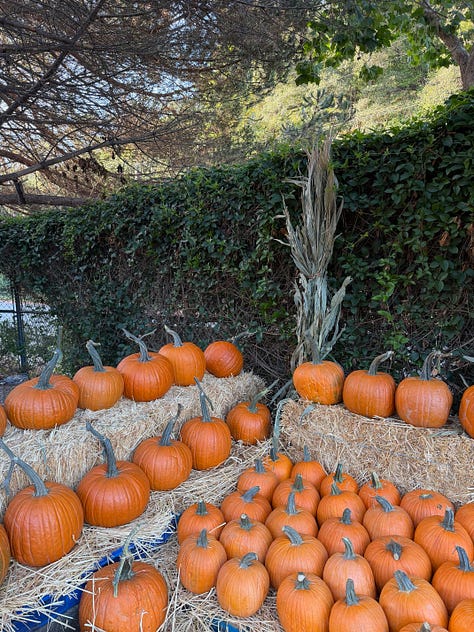
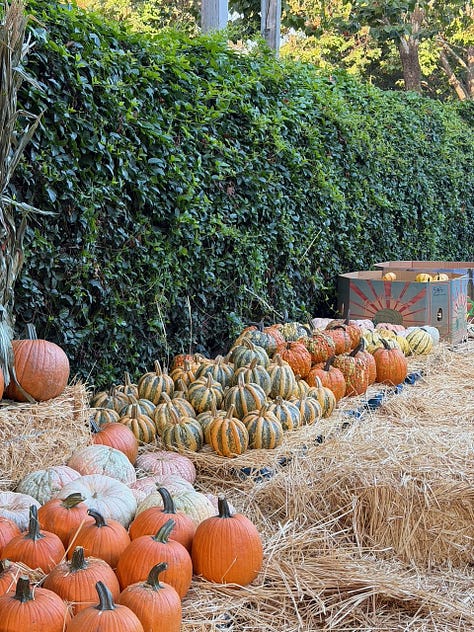
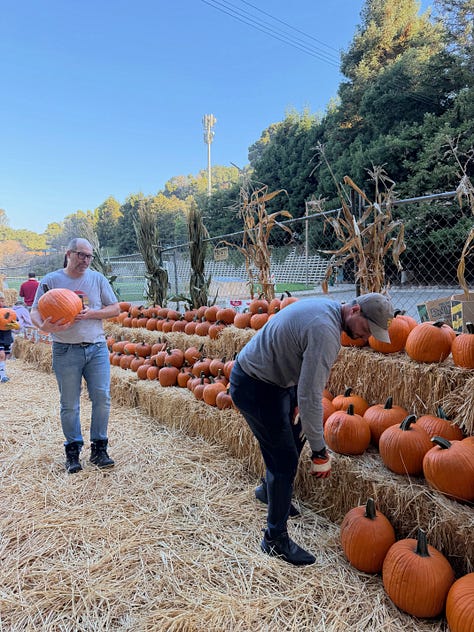
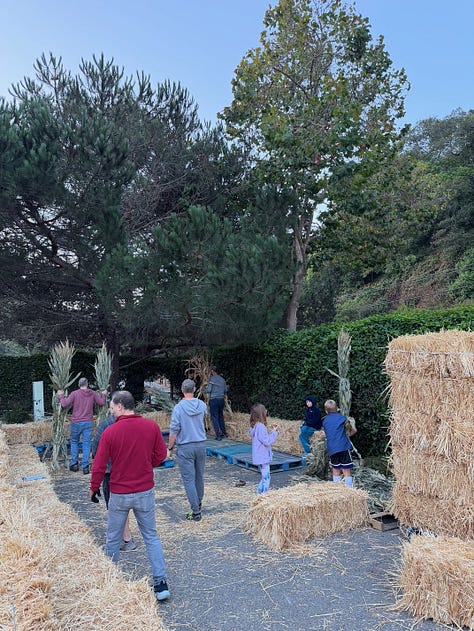
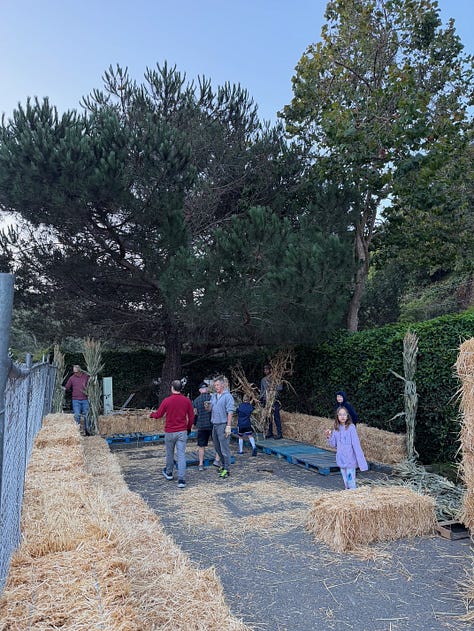
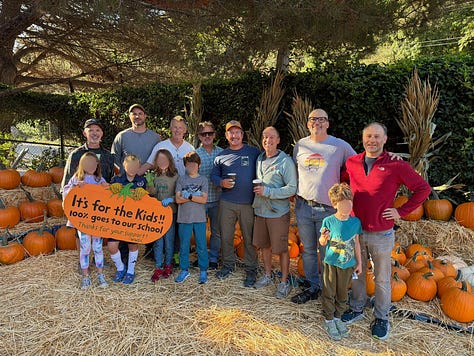
The Wildwood Dads Club is a registered 501c3 nonprofit. If you were inspired by this newsletter and want to contribute to local schools you can make a donation to the club here. It’s for the kids!



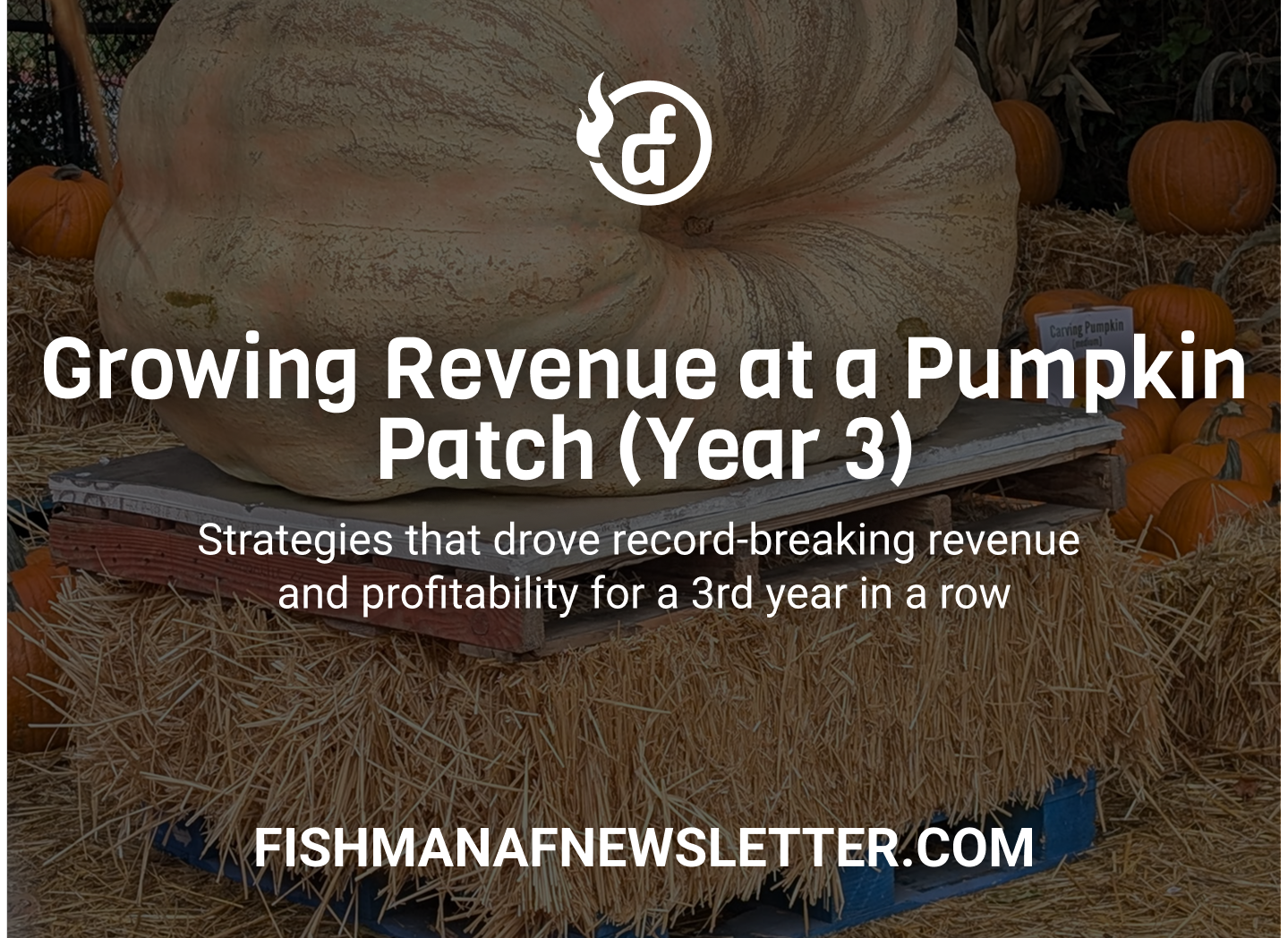
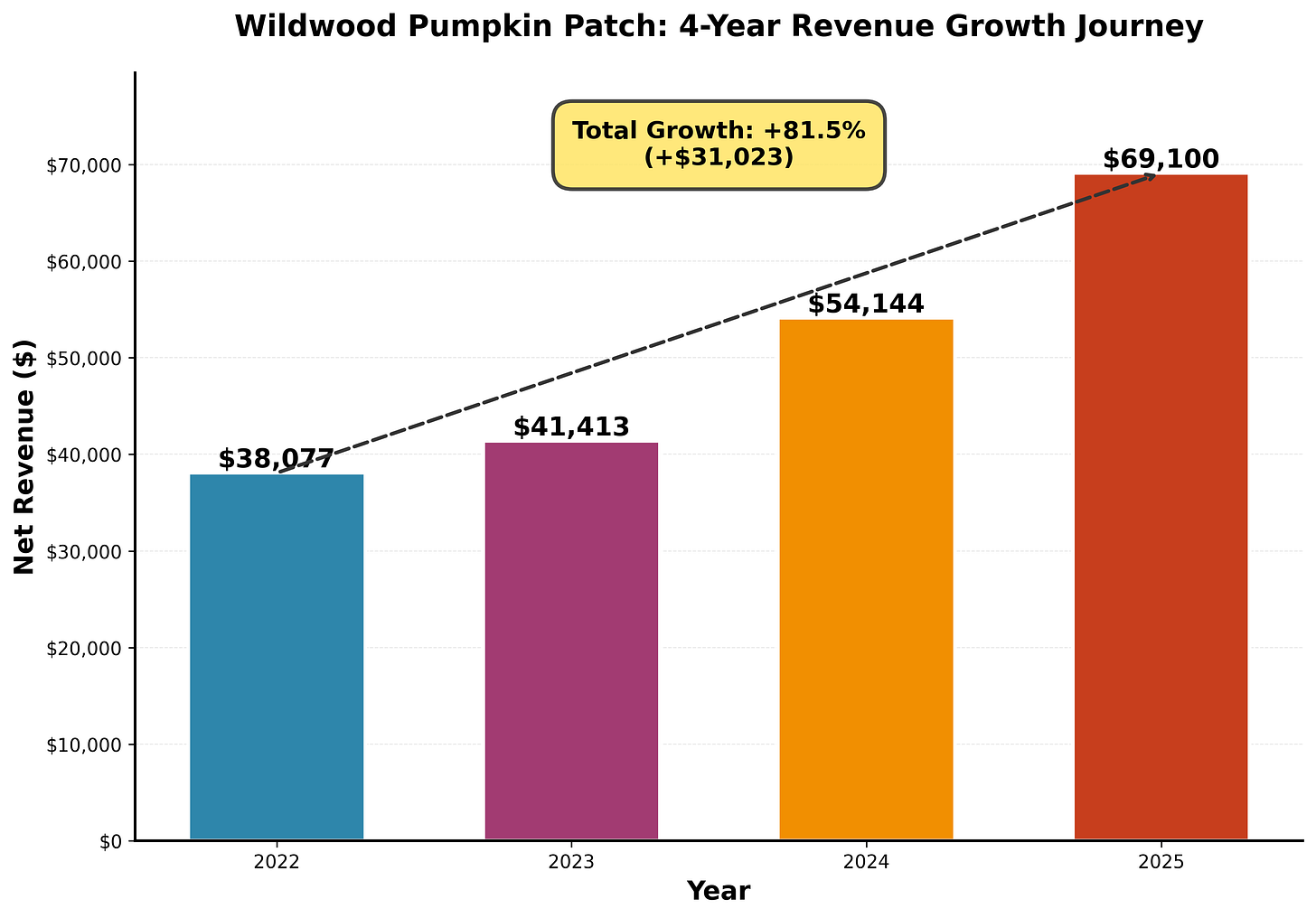
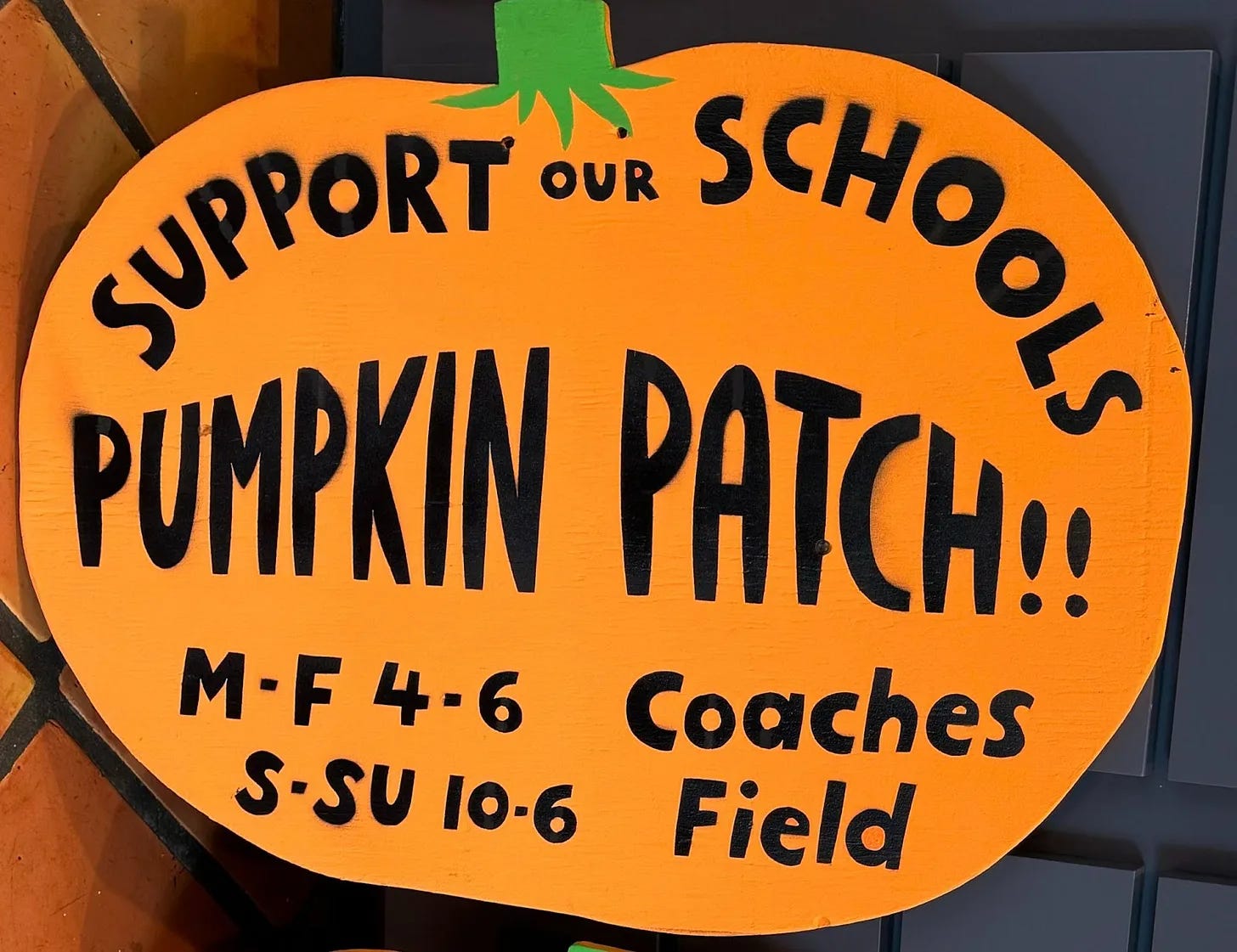
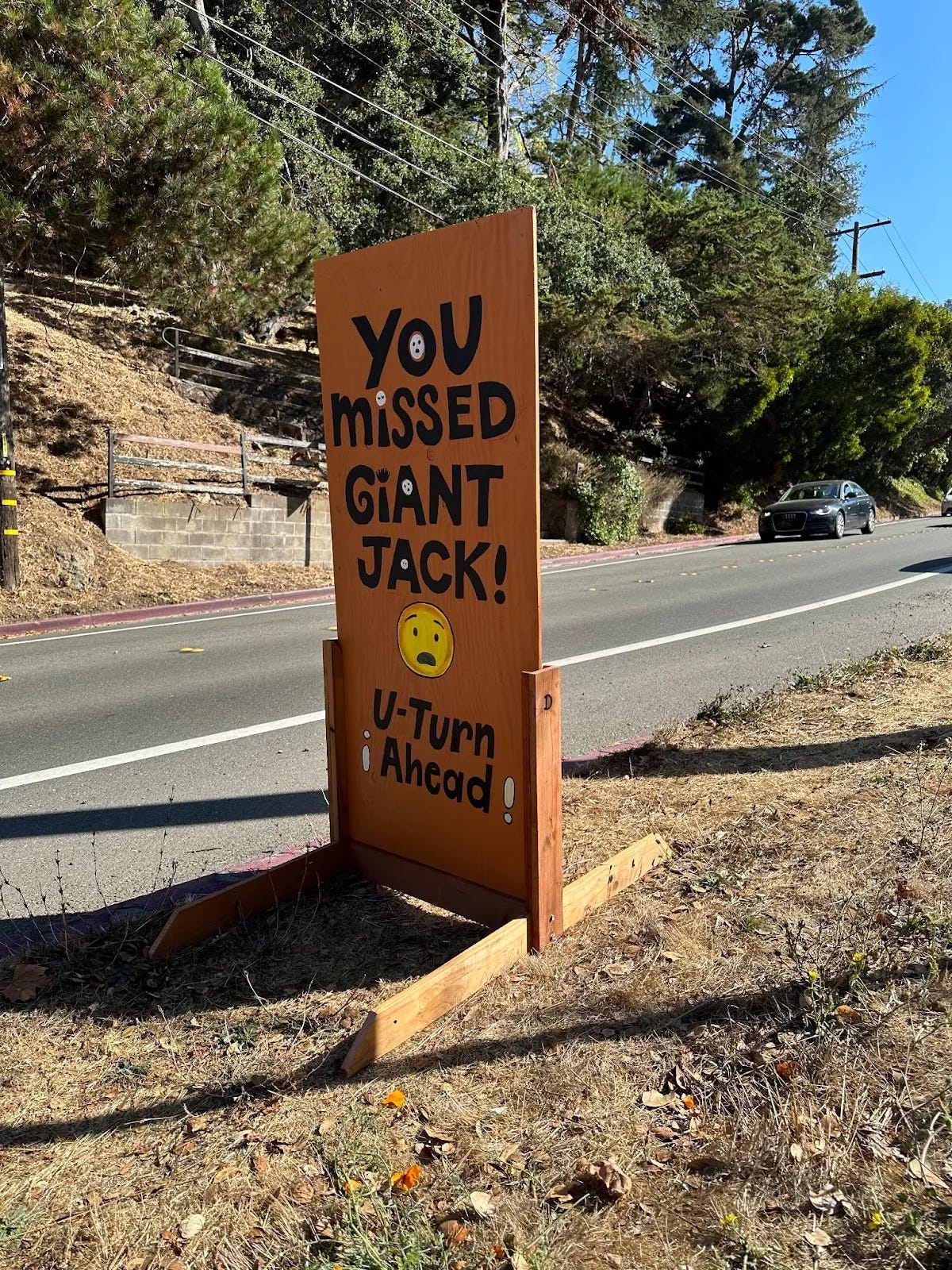
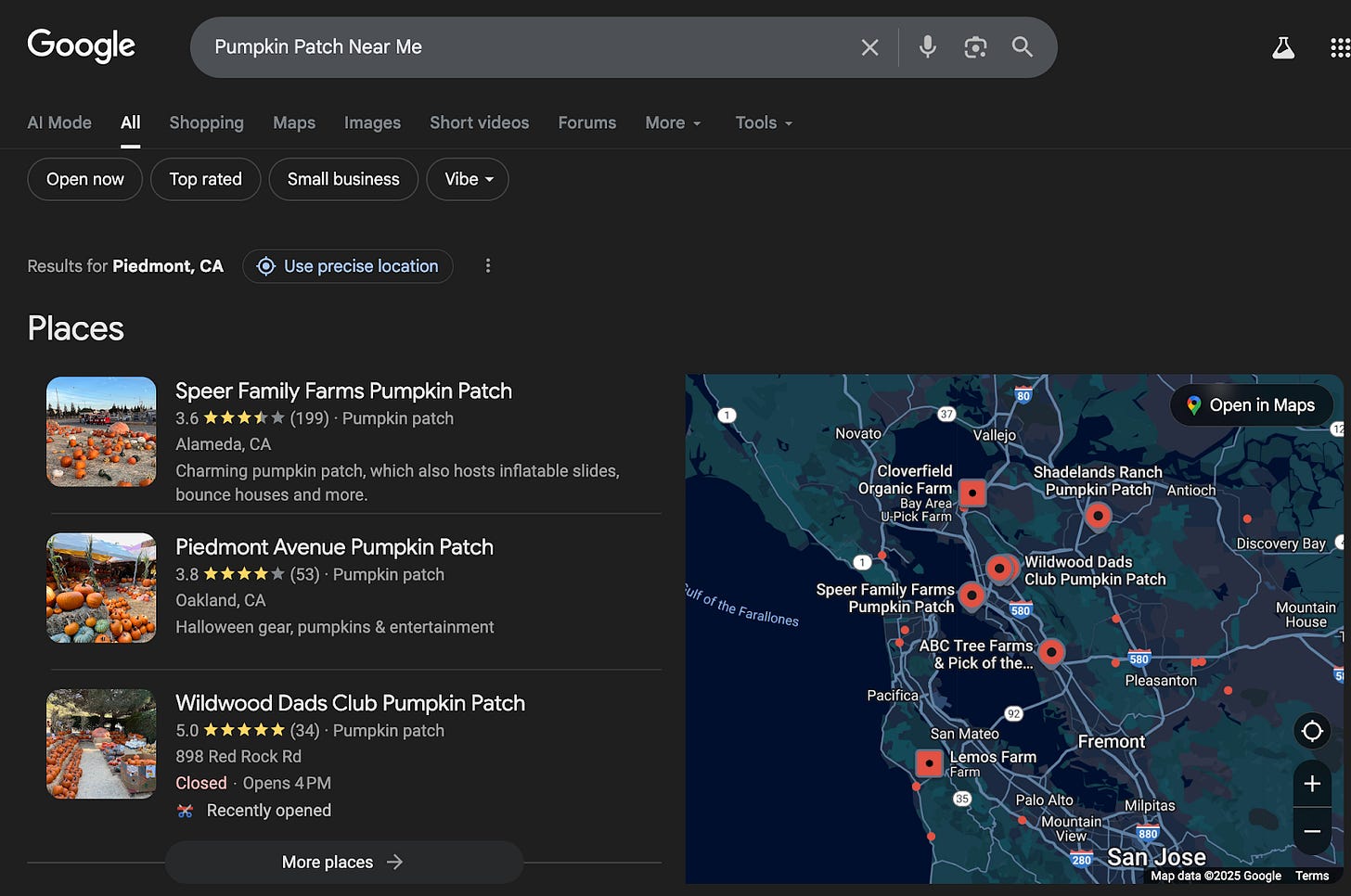
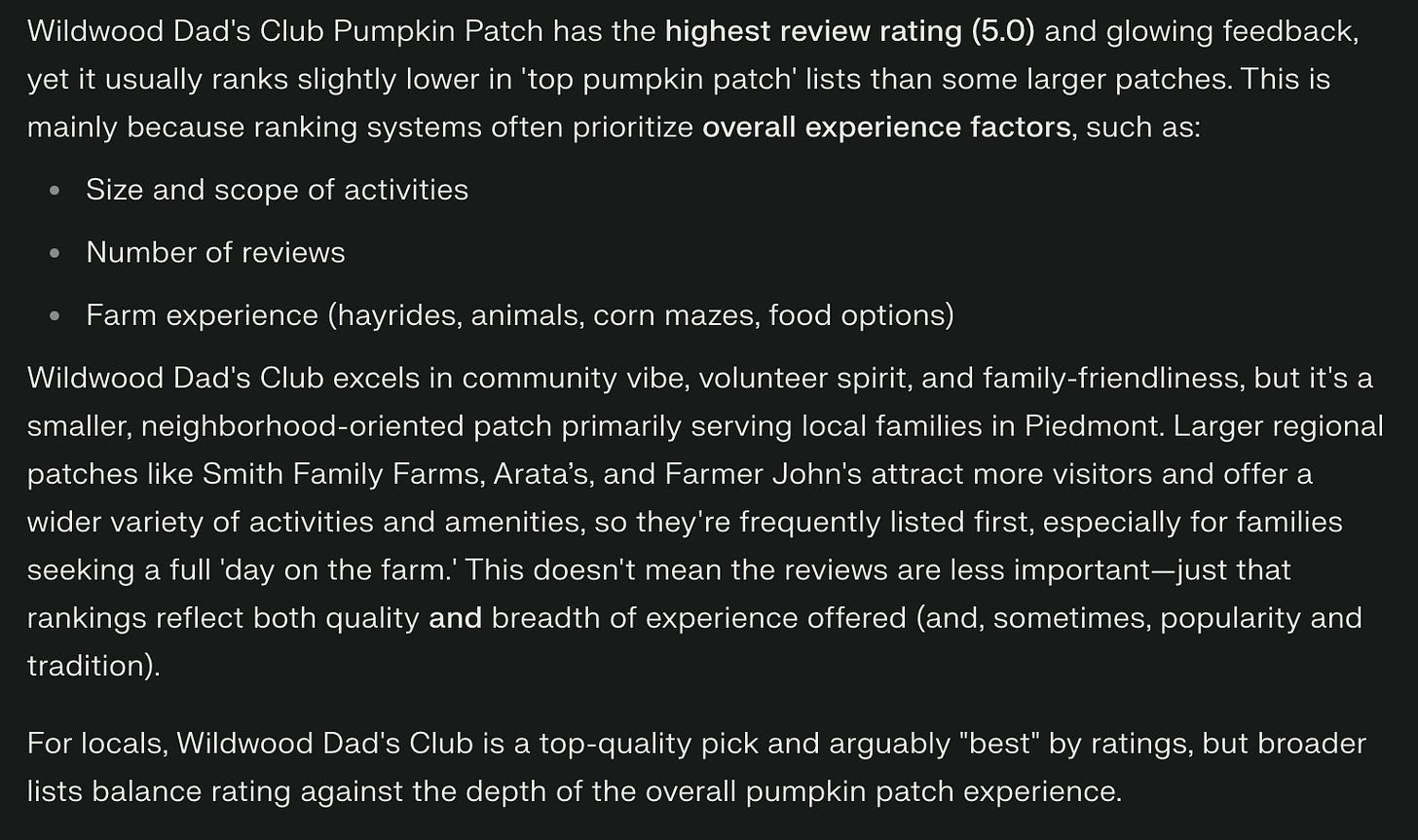
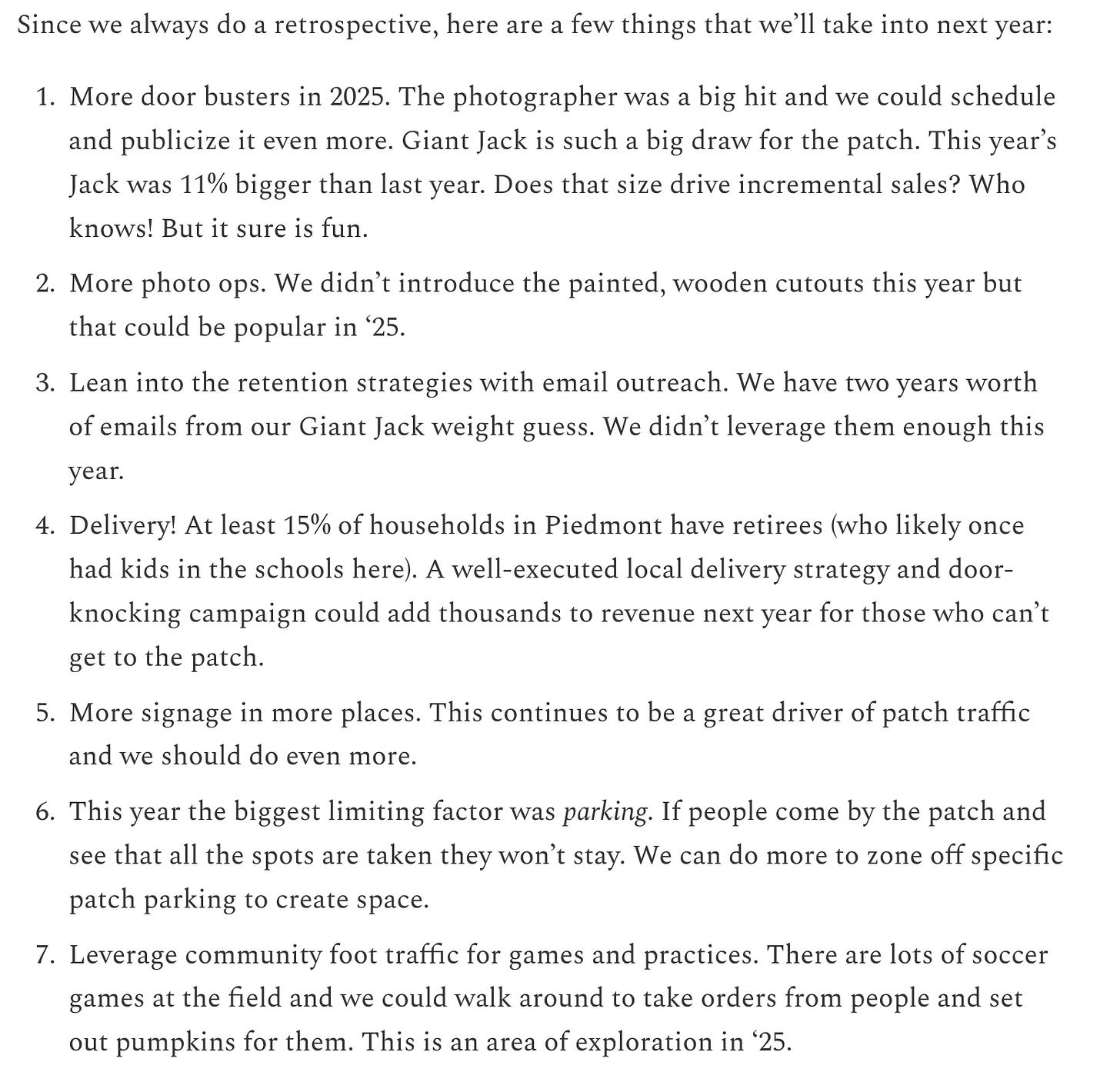

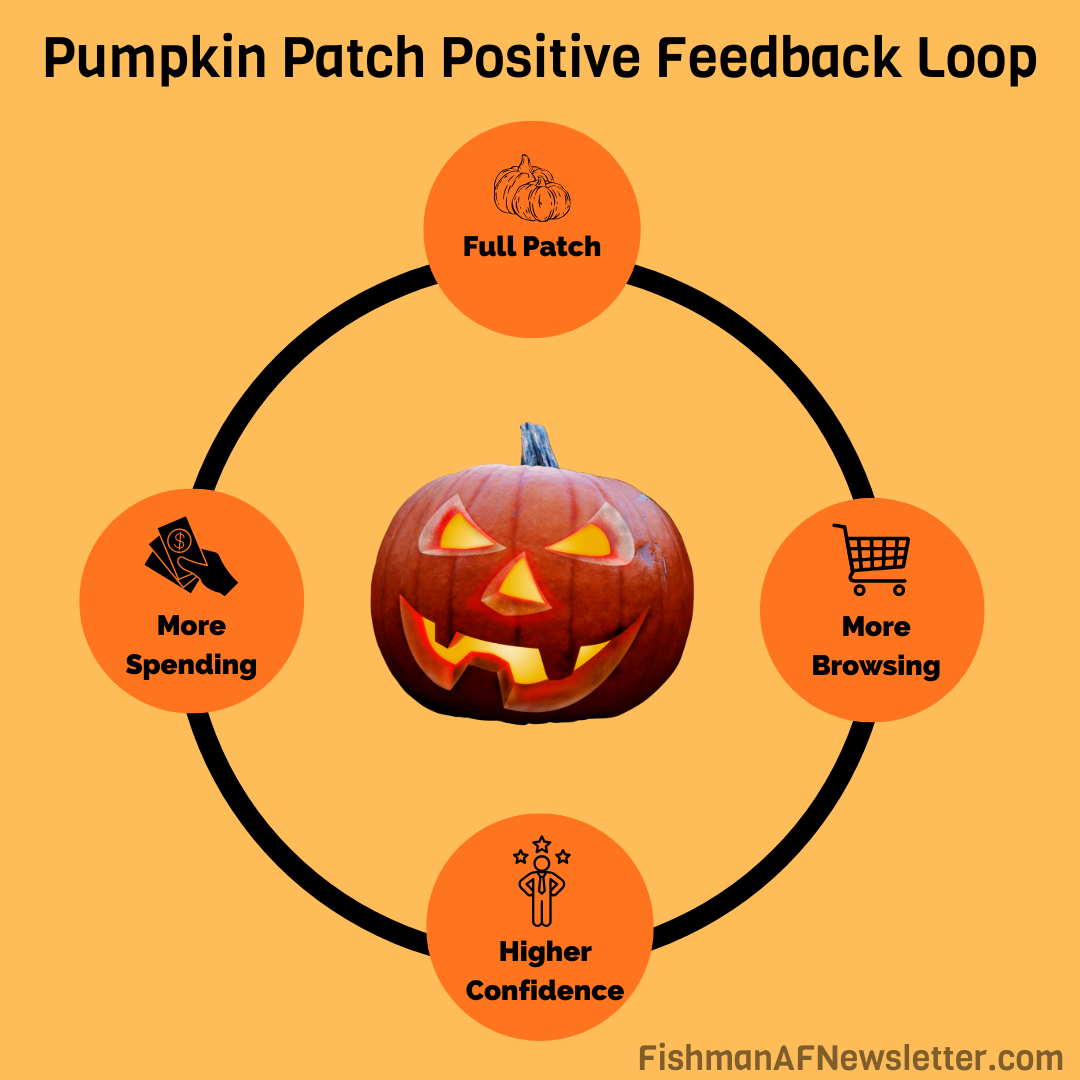
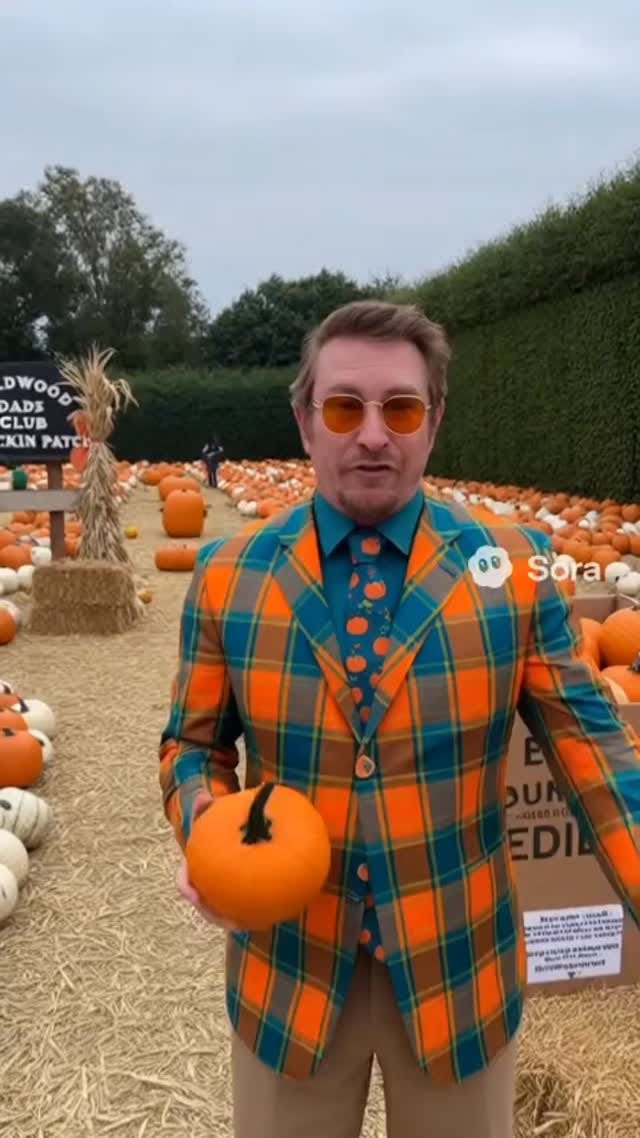
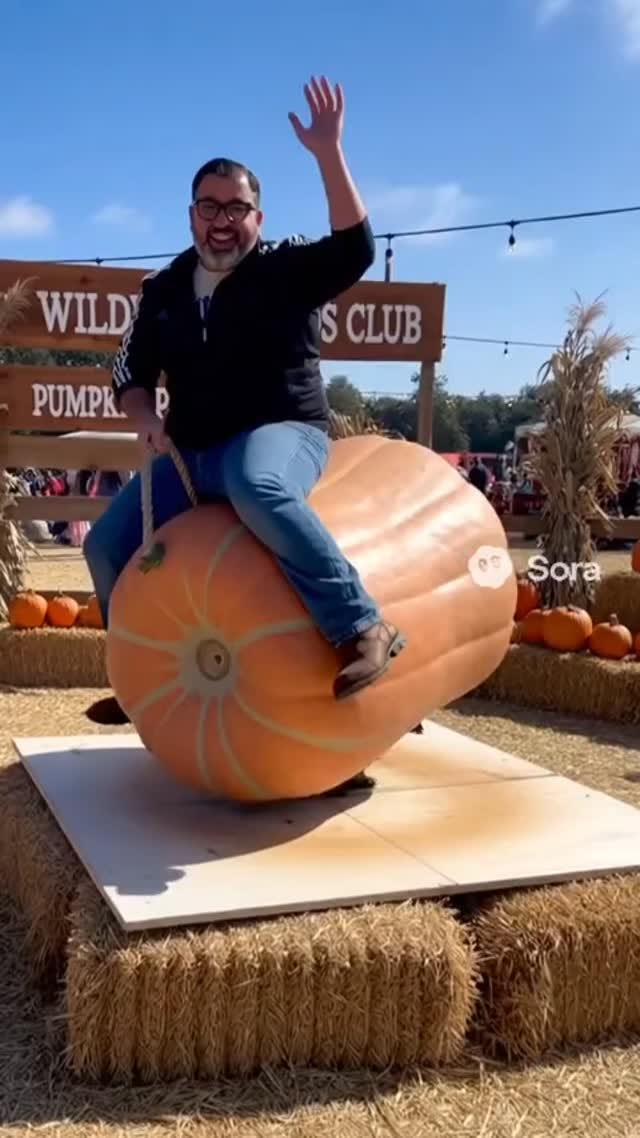
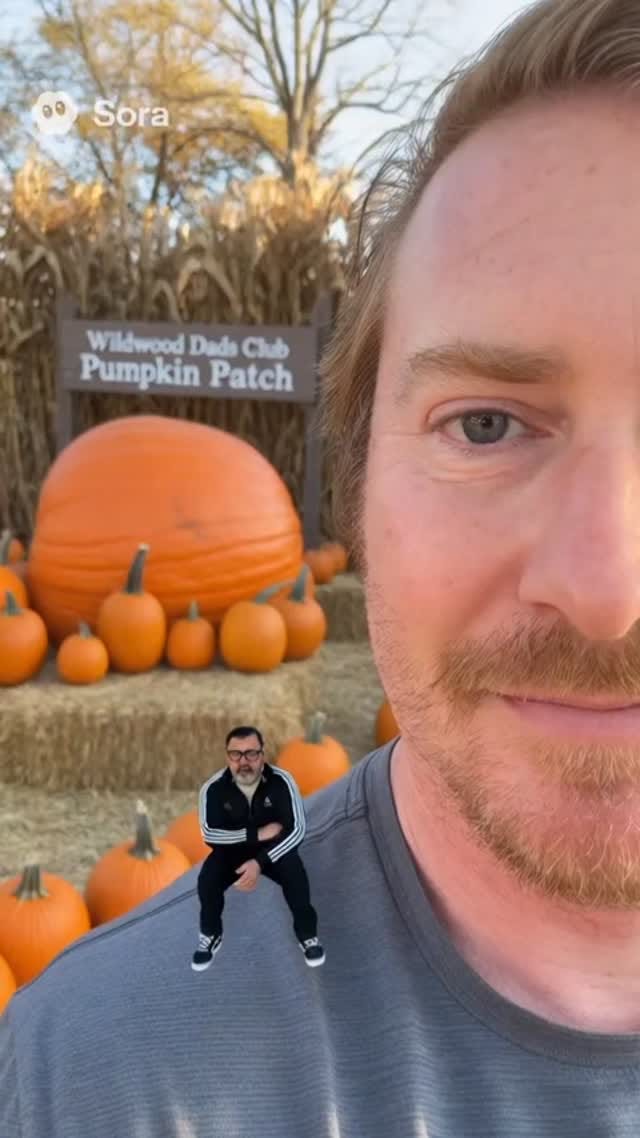
Excellent read, with evergreen leadership lessons! It’s been fantastic following the pumpkin patch journey year after year! The school is lucky to have a wonderful set of volunteers like you and your team.
I keep seeing the Pumpkin Patch signs around town, and have always loved the sign design and guerrilla style marketing strategy. Glad to know you are behind this awesome community initiative!